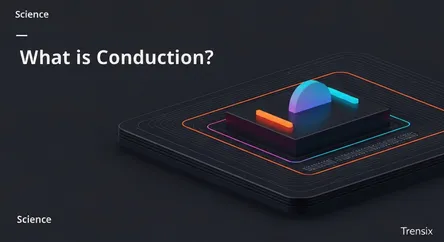Science
What is Conduction?

An explanation of conduction, the process of heat and energy transfer through direct contact, and its importance in our daily lives and technology.
What is it?
Conduction is the transfer of energy through direct physical contact. This process occurs when faster-moving particles in a hotter area collide with and transfer energy to neighboring particles. While it can happen in solids, liquids, and gases, it is most efficient in solids where particles are tightly packed. The most common form is thermal conduction, where heat moves from a warmer area to a cooler one, like a metal spoon heating up in a hot cup of tea. Conduction also describes the transfer of electricity, where charged particles move through a material like a copper wire.
Why is it trending?
Understanding conduction is a fundamental concept in science that drives innovation in many fields. In electronics, its principles are critical for designing heat sinks that dissipate thermal energy and prevent components from overheating. In construction and engineering, materials with poor conductivity, known as insulators, are essential for improving energy efficiency in buildings by minimizing heat loss or gain. Ongoing research in materials science focuses on developing substances with specific conductive properties for applications ranging from advanced electronics to more effective thermal management solutions.
How does it affect people?
Conduction is a constant part of daily life. We experience it when we touch a hot pan, feel the warmth of a coffee cup, or notice how quickly a metal doorknob feels cold in the winter. Technologically, it is essential for the function of countless devices, from the wiring that powers our homes to the cooling systems in our computers. This principle also enhances safety and comfort, influencing the design of insulated handles on cookware, the materials used for winter clothing, and the effectiveness of home insulation in maintaining a stable temperature.